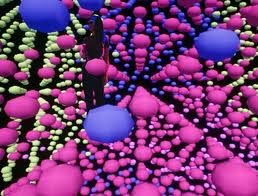 Investigating the emissions of nanomaterials from composites and other solid particles during machining process along with evaluation of safety of physicochemical hazards was the purpose of publishing such report.
Investigating the emissions of nanomaterials from composites and other solid particles during machining process along with evaluation of safety of physicochemical hazards was the purpose of publishing such report.
In the report, the anticipated safety risks of nanomaterials through a precautionary approach are being taken by the Commonwealth towards nanomaterials under the National Enabling Technologies Strategy. Safe Work Australia Chair Ann Sherry AO said, “While the risk to human health and safety from a number of these materials and applications are low, some nanomaterials are potentially more hazardous, for example carbon nanotubes. The National Industrial Chemicals Notification and Assessment Scheme (NICNAS) has recommended carbon nanotubes to be classified as suspected carcinogens unless product-specific evidence suggests otherwise.”
The contents of the report highlighted the details about the dangers of using significant quantities of materials which are health hazards. These health hazards were emitted from composite chemicals by high machining processes like machine cutting that requires high energy machining like electric saw. However, worker exposure may be prevented to this type of hazard using conventional engineering controls like exhaust ventilation.
The report likewise examines that dust clouds of engineered nanomaterials could trigger strong explosions if the dust cloud was found to be containing high amounts of nanomaterials ignited by fire. The report gives concrete examples of these. On the contrary, emissions from nanotechnology processes will be very minimal and below the needed level for an explosion to occur if the workplace is safely managed. Measures to prevent explosions caused by dusty materials were also highlighted as tips like the use of "wet processes" for handling nanomaterials, equipment design free of potential ignition sources, and the use of an inert atmosphere.
Under the framework of Work Health and Safety laws, all requirements to fulfill any work duty that has something to do with handling of materials are also applicable to nanotechnologies. The findings of this report will be utilised by Safe Work Australia to prepare guidance processes on combustible dust hazards like nanomaterials. The full reports are available on the Safe Work Australia website.


